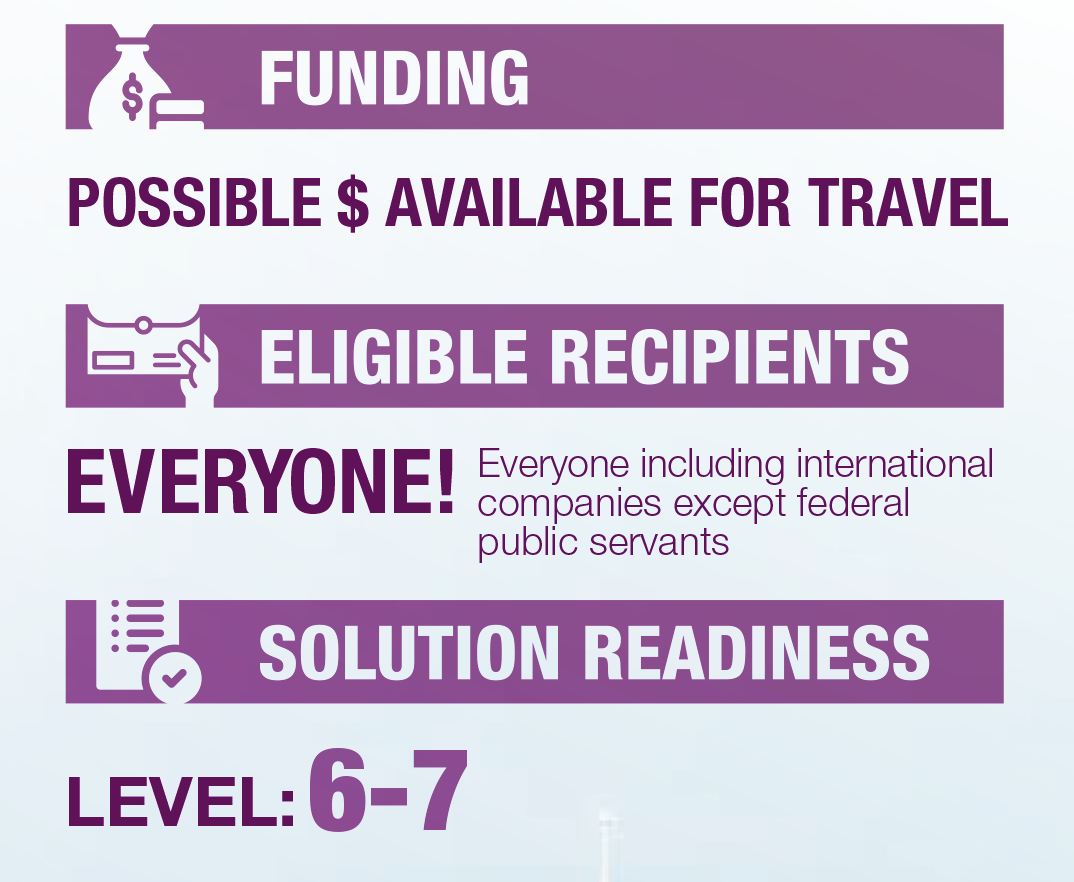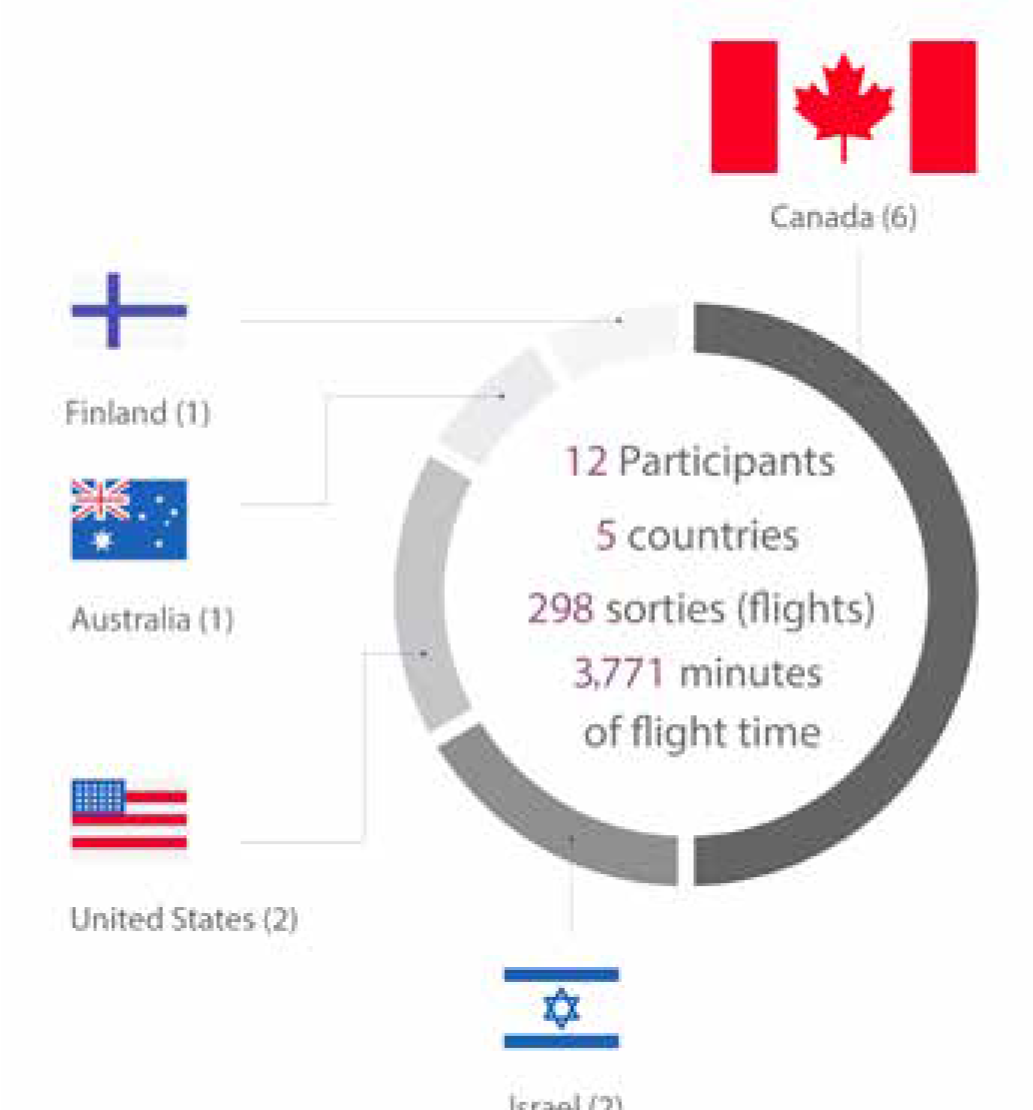Sandbox

-
Text version of graphic
Sandboxes Funding: Possible $ available for travel
Eligible Recipients: Everyone! Everyone including international companies except federal public servants
Solution Readiness: Level: 6-7
Sandboxes are an opportunity for innovators to test and demonstrate their solutions to published challenges. The scenario and environment are provided by the Department of National Defence (DND)/the Canadian Armed Forces (CAF), and participants will receive observational feedback from DND/CAF experts and potential users.
“The Canadian Army is thrilled to see advancement and we will keenly await the results and outcomes from this IDEaS Sandbox event.” – Colonel Chris Renahan, Directorate Land Requirement
Drone wars: countering unmanned aerial assaults
- Drone technology is cheap, widely available and can be easily modified to do harm. It is hard to detect and can be used for surveillance. There is only one option: Detect and Defeat. A recent Sandbox aimed at countering unmanned aerial threats brought together Canadian and international participants, presenting them with realistic threats and modern tactical scenarios.
- Technology such as Electro-Optical, Acoustic and Radar detection, Drone fired nets, jammers, and bullet drones received live feedback by members of DND, CAF, the RCMP and other experts. This collaborative approach will enable innovators to reach new levels by refining their systems and technologies.
The Canadian Armed Forces need new technologies and approaches to detect and defeat various threats from drones. The Counter Unmanned Aerial Systems Sandbox gave an opportunity for innovators to test and demonstrate their solutions to potential government and military clients in a real world environment. Innovators were given access to advanced infrastructure in an optimal test environment to trial responses to various realistic threats and modern tactical scenarios while receiving expert feedback for use and development.
Benefits of this Sandbox
- Expertise—With this event, we now have a solid exposure to different types of Counter-UAS systems. This goes far beyond what can be learned from web searches or superficial demonstrations. This expertise will allow us to speak authoritatively about the technology in providing sound advice to our Defence and Security partners.
- Experimental Capacity—The conduct of a complex test event such as this involved the development of procedures and tactics to fully test Counter-UAS systems. This capacity can now be used for further research and evaluation for our other partners

-
Text version of graphic
Participants listed by country included: Canada (6), Finland (1), Australia (1), United States (2), Israel (2)
The 12 participants from 5 countries flew 298 sorties (flights) for a total of 3,771 minutes of flight time
Unmanned Autonomous Systems (Uas) flight stats
The Sandbox was structured to accommodate both UAS detection technologies and defeat technologies such as RF jammers and kinetic drone intercept. A total of 12 participating companies with medium to high Technology Readiness Level (TRL) systems from five different countries were invited to DRDC Suffield over four weeks to demonstrate, test, and receive expert feedback from September 9 and October 4 of 2019.
How many hours of flight?
Over 19 trial days, the team conducted 298 drone test flights, consisting of 3,771 minutes of flight time.
Other interesting facts about the past sandbox:
- 298 drone test flights were conducted against the various Counter-UAS systems, with varying success;
- Technologies tested included radars, optical tracking, acoustic detection and tracking, radiofrequency (RF) detection and direction finding, RF jamming, and physical UAS intercept using airborne net guns and physical impact with friendly drones
- Unmanned Arial Systems tested had wingspans 30cm to 2m and speeds up to 160 km/hr.
Rust never sleeps: corrosion detection on ships
- Rust is a relentless enemy, attacking ships from the inside out. In this Sandbox challenge, innovators are asked to develop technology to detect rust, putting their methods to the test in the COVE testing facility in Halifax, Nova Scotia.
- Navy experts will participate to provide feedback throughout the emonstrations.
- The Call for Applications for this event was postponed to November 17th, 2020, with the event itself scheduled to take place in Halifax, Nova Scotia, in Spring 2021.